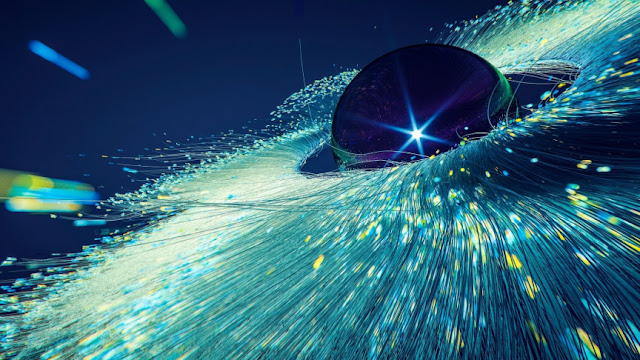Impatient with the results of recent experiments, she seeks a better theory that is not observer-dependent
Recently,
we ran a piece featuring the views of well-known science writer John Horgan who
talked about a truly strange element of quantum physics confirmed by recent
experiments — that it seems as if there is no knowledge apart from observers’
minds.
Sabine
Hossenfelder, a theoretical physicist, is dissatisfied with this approach:
Physicists
have demonstrated that there is no such thing as objective reality. This is
said to be a quantum mechanics-based understanding. Not only that, but it's
been scientifically proven. Really? What evidence do you have that reality does
not exist? Is it true that it has been completed? Do we have to say
"truly" any longer? That's what we'll be discussing today.
Many of
you have asked me to respond to the headlines that suggest reality does not
exist. It’s an instance in which physicists have excelled themselves in the
quest to make linear algebra sound strange. The outcome is patently absurd.
Beginning
with Eugene Wigner's thought experiment, "Wigner's Friend," which was
confirmed in the lab (with photons instead of friends), Hossenfelder
acknowledges the experiments that Horgan discusses:
Suppose
Wigner’s acquaintance Alice is in a laboratory and undertakes an experiment
like the one we just talked about. Wigner stands outside the door, waiting.
Inside the lab, the particle hits the screen with 50 percent chance left or
right. The wave-function collapses when Alice measures the particle, and it's
either left or right. She then opens the door and tells Wigner what she’s
measured.
But how
would Wigner explain the experiment? When his friend tells him whether the
particle travelled left or right, he finds out. So, according to quantum
mechanics, Wigner has to suppose that before he understands what’s happened,
Alice is in a superposition of two states. One in which the particle travelled
to the left and she knew it. And one in which everything went according to
plan, and she knows it.
The
problem is now that according to Alice, the outcome of her measurement never
was in a superposition, whereas for Wigner it was. As a result, they disagree
over what transpired. Reality appears to be a subjective concept.
In Hossenfelder’s
view, this should not be a huge concern because in a genuine experiment, the
measurement happens when Alice measures the particle hitting the screen. There
is no such thing as superposition.
But here's
the issue she goes on to point out:
Because in
the traditional interpretation of quantum physics the update of the
wave-function isn’t a physical operation. It's simply a mathematical update to
your knowledge that you perform after learning something new about the system.
It is not accompanied by any physical changes. And, according to Wigner, if
Alice didn't physically change anything, she must have been in a superposition
herself.
She is
dissatisfied with the results of the experiments and proposes "It's not
just a fanciful interpretation if you claim that a single photon is an observer
who makes a measurement; it's nonsense." She believes that a new quantum
mechanics theory is required.
So to
summarise, no one has shown that reality doesn’t exist and no experiment has
validated this. What these headlines tell you instead is that physicists slowly
come to recognise that quantum mechanics is inherently contradictory and must
be replaced by a better theory, one that represents what physically happens in
a measurement. And when they discover that hypothesis, it will be the century's
biggest breakthrough.
Now, the
significant point is that Hossenfelder is okay with how bizarre classical
particle physics may be. Consider neutrinos:
They are
the sole particles that interact only with the weak nuclear force. All the
other particles we know either interact with the electromagnetic force or the
strong nuclear force or both. And the nuclear force is ineffective. Which is
why neutrinos rarely interact with anything at all. Most of the time, they just
travel through matter without leaving any trace. This is why they are often
labelled “ghostly”. Approximately twelve to fifteen neutrinos have travelled
through you while you were listening to this text.
This isn't
the only strange thing about neutrinos. What's more bizarre is that the three
different neutrino flavours mingle together. If you start with simply
electron-neutrinos, for example, they will transform to muon-neutrinos as they
travel. After then, they'll revert to electron neutrinos. So, depending on what
distance from a source you conduct a measurement, you’ll obtain more electron
neutrinos or more muon neutrinos. Crazy! However, this is correct.
The
neutrinos’ entire behaviour, she informs us, is irreconcilable with the
Standard Model of physics. However, she finds it easier to accept that
"strange" circumstance.
We can
infer that the universe is a stranger place than we have occasionally been led
to assume and that the amount and type of strangeness each of us can bear
relies, to some part, on prior commitments. But, hey, the cosmos is what it is.





0 Comments